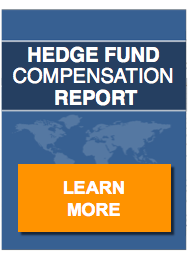Hedge funds and Republicans have at least one thing in common—media pundits rarely pass-up an opportunity to take a swipe at them when they falter. And hedge funds have faltered. Hedge fund assets under management (AUM) fell below last year’s hard won $3 trillion dollar high water mark.
Many would argue that hedge funds have lost their compass but, such an assessment would be unfair. There are three principal reasons behind these AUM declines and numberless ancillary ones.
The Growing Gap between Fees and Performance
Battles over the merits of hedge fund fee structures were raging even prior to CalPERS announcing its intentions to substantially reduce levels of hedge fund investments in the fall of 2014. However, continued declines in hedge fund performance have only exacerbated the public perception that hedge fund firms fail to deliver returns that justify their performance and management fees.
Expectations vs. Market Realities
Institutional investors are not immune to the criticisms heaped upon hedge funds by the chattering class and financial media pundits. Any politician will tell you that even a big lie, oft repeated, will eventually be regarded as fact. While it is true that almost all institutional investors know better, they do have people to whom they must answer. In many cases, the people to whom they must answer have bought into the media hype.
Hedge fund professionals recognize that when hedge funds are underperforming the S&P 500 it is financial front page news. However, when the reverse is true—crickets! For example, the S&P 500 was down 5.47 percent from its December 31st close at the end of February. Hedge funds, on the other hand, were down one-half that number at -2.55 percent. Of course, this doesn’t earn the industry any bragging rights, but, in fairness, the industry outperformed this frequently cited benchmark by a substantial margin.
Increased Competition
Hedge funds are not alone in the universe of alternative investments. There is competition aplenty for investor cash. These include, but are not limited to, private equity, venture capital, real estate, infrastructure, private debt and natural resources.
The 2016 Preqin Investor Outlook: Alternative Asset Report illustrates this quite definitively. According to the report, of the institutional investors surveyed, only 25 percent indicated a preference for investing more capital into hedge funds than they had invested in the previous twelve months. More troubling is the fact that over 30 percent indicated they would invest less.
In sharp contrast, institutional investors planning to increase their positions in competing alternative assets expressed intentions that were well north of 40 percent in private equity, infrastructure and private debt.
Closing Thoughts
Given the current state of the hedge fund industry, it is incumbent upon managers to examine their business models and create innovative investment strategies to differentiate themselves from the competition.
Additionally, hedge fund managers must do a better job of meeting investor concerns and adapting to the needs of investors in a meaningful way. While performance will likely remain an issue for the foreseeable future, there is much that can be done to reverse this trend of declining assets under management.


